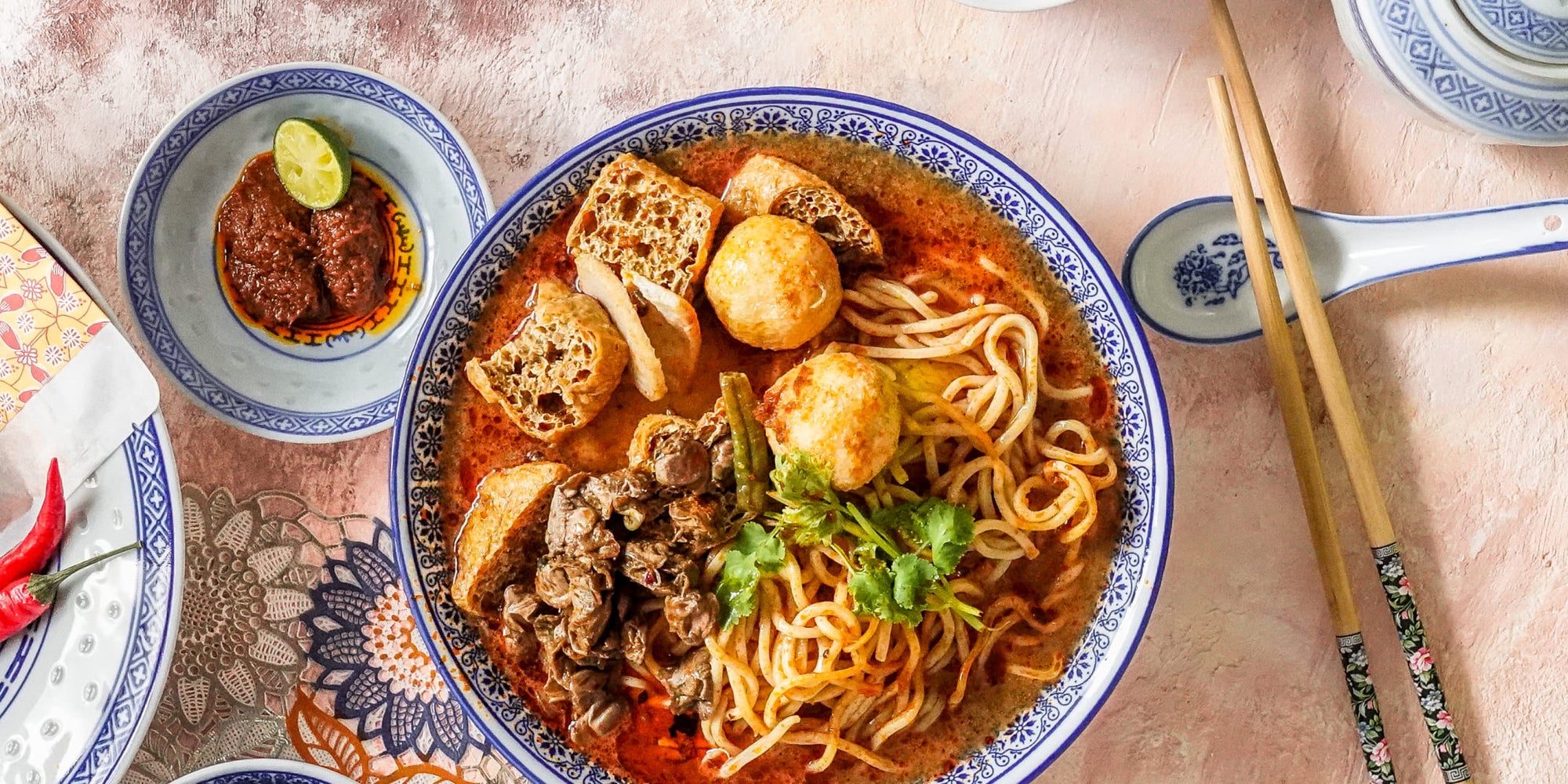




![[BUNDLE] Laksa - 3 Pack](http://www.homiah.com/cdn/shop/files/Hero-Final_8df79024-8bbc-4a19-97c7-e12604da1a3e_small.png?v=1709701179)
![[BUNDLE] Red Curry - 3 Pack](http://www.homiah.com/cdn/shop/files/Hero-Final_small.png?v=1711629863)
![[BUNDLE] Rendang - 3 Pack](http://www.homiah.com/cdn/shop/files/Hero-Final_0814fbff-a2f0-486d-ad4e-aae1a64cc2dd_small.png?v=1711630179)

Only away from
$47
$85
$115
You have no items in your cart.
Shop now
Sambal Chili Crunch, Shrimp

Sambal Chili Crunch, Vegan

Nonya Napkins

Gluten Free Laksa Noodles

Spice Kit Trio
![[BUNDLE] Laksa - 3 Pack](http://www.homiah.com/cdn/shop/files/Hero-Final_8df79024-8bbc-4a19-97c7-e12604da1a3e_small.png?v=1709701179)
Laksa
![[BUNDLE] Red Curry - 3 Pack](http://www.homiah.com/cdn/shop/files/Hero-Final_small.png?v=1711629863)
Red Curry
![[BUNDLE] Rendang - 3 Pack](http://www.homiah.com/cdn/shop/files/Hero-Final_0814fbff-a2f0-486d-ad4e-aae1a64cc2dd_small.png?v=1711630179)
Rendang
Discount Code
Package Protection
Hide

Laksa is the secret holy grail of noodle soups in Southeast Asia. It’s a highly-slurpable noodle dish that is impossible to dislike. Every laksa comes in three parts—the noodles (most often rice noodles or vermicelli), toppings (usually vegetables and seafood or chicken), and a mouthwatering curried broth. The dish is a national favorite across Singapore and Malaysia, eaten enthusiastically for breakfast and lunch at home or a hawker stalls.
While laksa isn't the best known noodle dish outside of Southeast Asia (pad thai and pho still wins the popularity contest), one slurp of laksa broth can convert even the biggest skeptics, thanks to its punchy flavor and intoxicating aroma. Plus, much like ramen or pasta, there exist many variations of laksa to suit all tastes — from tamarind flavored, fish-heavy laksas in the Northern Malaysian states of Penang and Kedah to the spice-forward Sarawak laksas of Borneo. But perhaps none is as ubiquitous or internationally recognised as the Singaporean version — a rich, creamy curry soup base, perfumed by cumin and plenty of coconut milk. If all that isn't enough to convince you, get this, the legendary late Anthony Bourdain anointed this dish with the moniker "the breakfast of gods."
Traditionally, cooking a bowl of laksa from scratch might take a whole day. The broth in particular is where all the culinary magic lies, and can be tricky to cook up, requiring hours of patient stirring and simmering. With some versions, like the one I learned in Penang where I apprenticed a master laksa chef, there can be hours of additional prep work such as simmering whole mackerels in the broth, then picking the meat out from the bones, before cooking it in the broth again.
As I’ve grown older, I’ve come to appreciate laksa’s versatility for the modern cook or the busy mother. With Homiah’s spice kits, laksa becomes the perfect grown up “emergency food”, an answer to mixing and matching leftovers in the fridge — a bit of tofu, some lettuce, chunks of rotisserie chicken — all coming together into a silky, nostalgia-inducing steaming bowl of laksa.
It has been exciting to learn how Homiah’s customers cook their laksa. Many go the traditional route, using a mix of rice vermicelli and yellow egg noodles and including classic toppings like hard-boiled eggs, shrimps, tofu, beansprouts, cilantro, and a side of sambal or hot sauce for an extra kick. Some reported great success with pouring laksa over buttered pasta and topping it with vegetables like spinach and kale. And I always get kick hearing how my laksa gave someone a quick fix for a weeknight dinner when there was absolutely nothing in the fridge.
Laksa is incredibly forgiving, so however you make it just knowing you’ll end up with a bold, intensely flavorful broth to nourish tummy and soul.
NOTES
There are three elements to the laksa—the broth, the noodles, and toppings that are assembled together in stages.

INGREDIENTS
Optional: Toppings
METHOD
VARIATIONS
Ingredient alternatives based on dietary preferences: